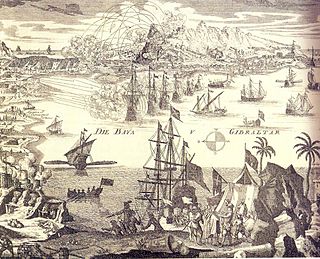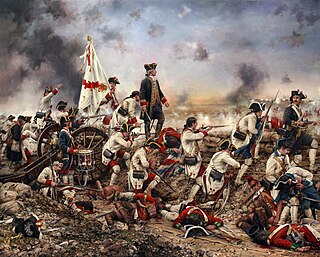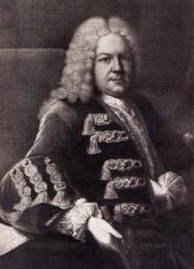Related Research Articles

Ferdinand II and Isabella united Spain, drove out the Moslems, and used Christopher Columbus and numerous conquistadors to build a large colonial empire in Latin America. Spain became an international power in the 16th century, especially under the rule of kings Charles V (1516–1565) and Philip II (1556–1598). They fought against the Protestant Reformation and had large holdings across Western Europe. The American colonies shipped large amount of gold and silver, but the new wealth was spent in interminable wars against France and the Netherlands, as well as the Ottoman Empire, England and others. By 1700 decline and poverty had set in and Spain played a smaller and smaller role. It became a battlefield between the British Empire and France in the Napoleonic Era. Nearly all its colonies fought for and won independence in the early 19th century. The remainder fell to the United States in 1898. The Spanish Civil War of 1936-1939 became a proxy war between the axis powers Germany and Italy and the Soviet Union. World leaders isolated General Franco, the ruler 1939–1975. Spain was neutral in both world wars. Democracy and a degree of normalcy followed 1975. Spain joined NATO and entered the European Community.

The War of Jenkins' Ear was a conflict between Britain and Spain lasting from 1739 to 1748, mainly in New Granada and among the West Indies of the Caribbean Sea, with major operations largely ended by 1742. Its name, coined by British historian Thomas Carlyle in 1858, refers to Robert Jenkins, a captain of a British merchant ship, who suffered having his ear severed when Spanish sailors boarded his ship at a time of peace. There is no evidence that supports the stories that the severed ear was exhibited before the British Parliament.

Olivenza or Olivença is a town situated on an historically disputed section of the Portugal–Spain border. Its territory is administered by Spain as a municipality belonging to the province of Badajoz, and to the wider autonomous community of Extremadura.

Thomas Pelham-Holles, 1st Duke of Newcastle upon Tyne and 1st Duke of Newcastle-under-Lyne, was a British Whig statesman, whose official life extended throughout the Whig supremacy of the 18th century. He is commonly known as the Duke of Newcastle.
Treaty of Madrid may refer to:

The Treaty of Seville was signed on 9 November 1729 between Britain, France, and Spain, formally ending the 1727–1729 Anglo-Spanish War; the Dutch Republic joined the Treaty on 29 November.
The Spanish–Portuguese treaty of 1750 or Treaty of Madrid was a document signed in the Spanish capital by Ferdinand VI of Spain and John V of Portugal on 13 January 1750, to end armed conflict over a border dispute between the Spanish and Portuguese empires in South America in the vicinity of the Uruguay River, an area known as the Banda Oriental. The treaty established borders between the Spanish and Portuguese empires, ceding much of what is today's country of Brazil to the Portuguese.

The Anglo–Spanish War was a military conflict fought between Britain and Spain as part of the Seven Years' War. It lasted from January 1762 until February 1763 when the Treaty of Paris brought it to an end.

The Royal Palace of El Pardo is a historic building in Madrid, Spain, in the present-day district of Fuencarral-El Pardo. It is owned by the Spanish state and administered by the Patrimonio Nacional agency. It serves as the state guest house of the Spanish Government.

The First Treaty of San Ildefonso was signed on 1 October 1777 between Spain and Portugal. It settled long-running territorial disputes between the two kingdoms' possessions in South America, primarily in the Río de la Plata region.

Spain played an important role in the independence of the United States, as part of its conflict with Britain. Spain declared war on Britain as an ally of France, itself an ally of the American colonies. Most notably, Spanish forces attacked British positions in the south and captured West Florida from Britain in the siege of Pensacola. This secured the southern route for supplies and closed off the possibility of any British offensive through the western frontier of the United States via the Mississippi River. Spain also provided money, supplies, and munitions to the American forces.

The Treaty of El Pardo signed on 11 March 1778 finalised colonial borders between Spain and Portugal in the Río de la Plata region of South America. Portugal acquired Spanish territories in South America, later on given to Brazil, Spain acquired Portuguese territories in Africa, today known as the independent state of Equatorial Guinea.

The Anglo-Spanish War of 1727–1729 was a limited war that took place between Great Britain and Spain during the late 1720s, and consisted of a failed Spanish attempt to capture Gibraltar and a unsuccessful British blockade of Porto Bello. It eventually ended with a return to the previous status quo ante bellum following the Treaty of Seville.

Sir Benjamin Keene (1697–1757) was a British diplomat, who was British Ambassador to Spain from 1729 to 1739, then again from 1748 until his death in Madrid in December 1757. He has been described as "by far the most prominent British agent in Anglo-Spanish relations of the 18th century".
The Spanish–Portuguese War between 1762 and 1763 was fought as part of the Seven Years' War. Because no major battles were fought, even though there were numerous movements of troops and heavy losses among the Spanish invaders—decisively defeated in the end—the war is known in the Portuguese historiography as the Fantastic War.

The Convention of Pardo, also known as the Treaty of Pardo or Convention of El Pardo, was a 1739 agreement between Britain and Spain. It sought to resolve trade issues between the two countries and agree boundaries between Spanish Florida and the English colony of Georgia.

The Anglo-Austrian Alliance connected the Kingdom of Great Britain and the Habsburg Monarchy during the first half of the 18th century. It was largely the work of the British statesman Duke of Newcastle, who considered an alliance with Austria crucial to prevent the further expansion of French power.
The Congress of Soissons was a diplomatic conference held between a number of European powers, but principally Great Britain and Spain between 14 June 1728 and July 1729 in the French town of Soissons.

The Wall Ministry was a Spanish government headed by Ricardo Wall which served between 15 May 1754 to 9 October 1763 during the reigns of Ferdinand VI and Charles III.

The Treaty of Madrid, also known as the Treaty of Aquisgran, was a commercial treaty between Britain and Spain, formally signed on 5 October 1750 in Madrid.